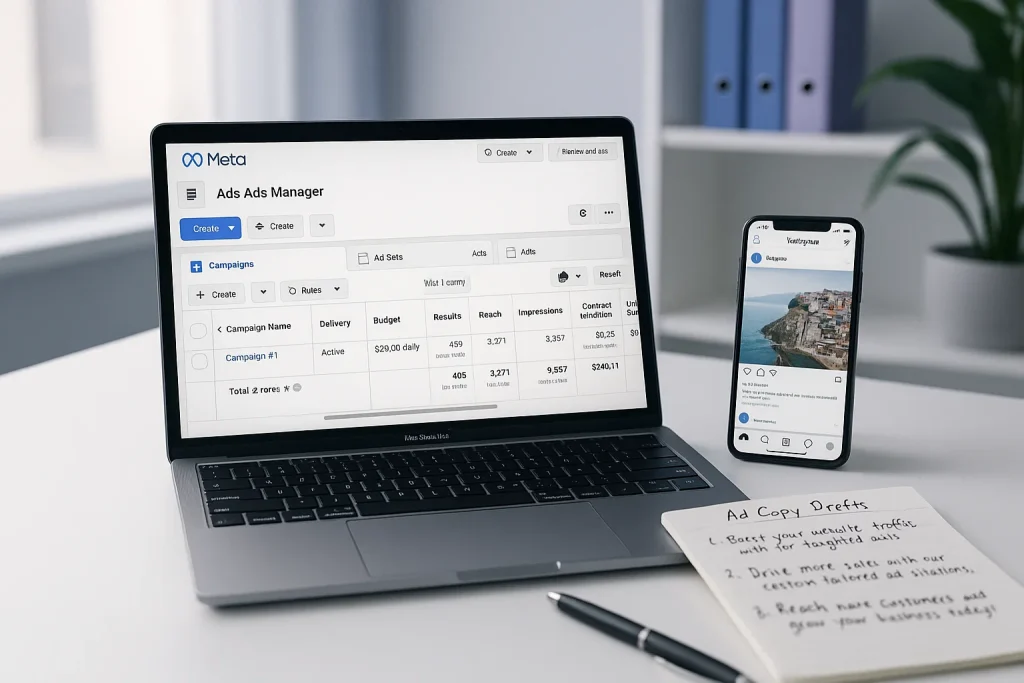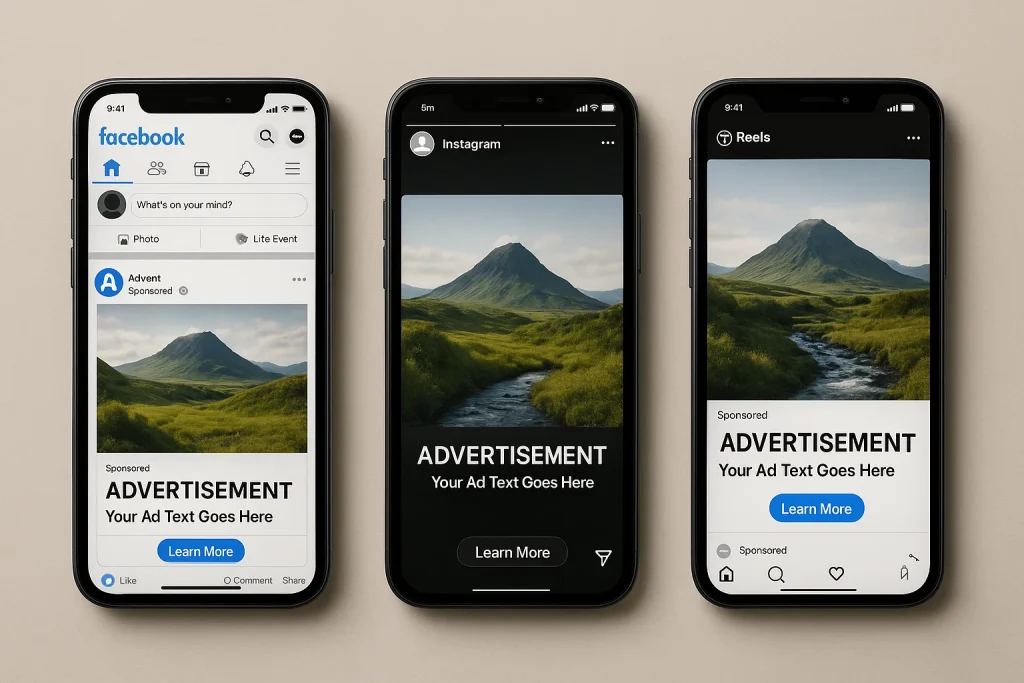Why Meta Ads Copy Specs Matter in 2025
With the constant evolution of Facebook and Instagram’s ad ecosystem,keeping up with the latest Meta ads copy specs is no longer optional-it’s essential for performance.
Meta’s platforms are increasingly AI-driven,optimizing delivery based on creative quality,engagement potential,and compliance with ad formatting standards. Ads that fail to meet text,image,or ratio requirements may suffer lower reach or even disapproval.
Understanding the latest meta ads copy specs helps marketers ensure that every word,image,and format works harmoniously-maximizing both visibility and conversion potential.
2025 Meta Ads Copy Specs Overview
Let’s start with the foundational elements of every Meta ad: text,layout,and format requirements. Whether you’re running campaigns across Facebook Feed,Instagram Reels,or Stories,following the right specs ensures your message appears exactly as intended.
Meta Ads Primary Text Character Limit
The meta ads primary text character limit defines how much of your main ad message is visible before truncation. Typically, users will only see the first 125 characters of your ad copy before they need to click”See More.”
While Meta technically allows longer text, most placements prioritize brevity for better engagement. Ads that communicate their key offer or emotion within the visible range often perform significantly better.
Tip: Use the opening line to hook attention — state your offer, solve a pain point, or introduce curiosity. For mobile users (who make up over 90% of Meta ad impressions), shorter is always stronger.
Example: “Join 10,000+ creators who edit faster with Admaker — start free today!”
Meta Ad Copy Character Limit
The meta ad copy character limit defines how much text appears before truncation across Meta placements.
For most placements,only the first 125 characters of your primary text (the main body copy) are visible before users need to click “See More.”
This means your most compelling message – your offer,hook,or emotional trigger – should appear within this limit. While Meta technically allows more characters,longer copy is collapsed,significantly reducing engagement.
💡 Pro Tip: Keep your first two lines crisp,emotional,and benefit-driven. Aim for clarity over cleverness – especially on mobile,where limited screen space amplifies the impact of brevity.

Meta Ads Headline Character Limit
Headlines play an outsized role in Meta ad performance.
The meta ads headline character limit is 40 characters,which might sound restrictive,but it forces focus.
Effective headlines are short,direct,and emotionally resonant. Think of them as your elevator pitch – one line that communicates value fast.
Examples:
- “Shop the Sale Before It Ends”
- “Your Daily Coffee,Now Smarter”
- “Upgrade Your Routine in Seconds”
💡 Tip: Lead with benefits,not brand names. Your audience should instantly understand why they should care.
Meta Ads Description Character Limit
While the description field is optional,it still matters for reinforcing value and trust.
The meta ads description character limit is 30 characters,which appears below the headline in some placements like the Facebook Feed.
Use this space to emphasize social proof,pricing,or urgency – but keep it concise.
For example:
- “Free Shipping Today Only”
- “Trusted by 10,000+ Users”
- “Eco-Friendly Materials Inside”
📌 Tip: Not all ad placements display the description. Focus on making your primary text and headline strong enough to stand alone.
Meta Ads Call-to-Action (CTA) Options
Unlike copy fields,CTA options are predefined by Meta,meaning you’ll select from existing buttons like “Shop Now,” “Learn More,” or “Sign Up.”
While you can’t modify the CTA copy specs,choosing the right one is critical for click-through performance. The CTA should align with your landing page intent – informational pages work best with “Learn More,” while conversion-oriented pages should use “Shop Now” or “Get Offer.”
Putting It All Together
When viewed as a system,these specs – meta ad copy character limit,meta ads headline character limit,and meta ads description character limit – create a framework that balances creativity and clarity.
Marketers who write with these boundaries in mind see stronger engagement,cleaner presentation across placements,and fewer disapproved ads. Specs aren’t restrictions – they’re guidelines for precision.
Image and Video Format Specs
Beyond text,meta ads copy specs also extend to creative dimensions and safe zones. Proper sizing prevents cut-off captions and maintains a polished appearance across devices.
Image Ads
- Aspect Ratio:1.91:1(horizontal) or 1:1(square)
- Recommended Resolution:1080×1080 px minimum
- Max File Size:30 MB
- Formats:JPG or PNG
- Best Practice:Avoid more than 20% text overlay for better clarity and delivery performance.
Video Ads
- Aspect Ratio:1:1 for Feed,9:16 for Reels and Stories
- Resolution:At least 1080×1920 px
- Length:Up to 60 seconds(ideal:6–15 seconds)
- Max File Size:250 MB
- Formats:MP4 or MOV
- Captions:Recommended for accessibility and muted playback scenarios.
💡 Tip:Videos that follow both technical and meta ads copy specs(correct ratio,clean on-screen text,and short captions) tend to score higher on engagement metrics.

Writing Copy That Fits the Specs – and Converts
Compliance with meta ads copy specs keeps your ads approved. Great writing makes them perform. Here’s how to balance both.
1. Prioritize the First 125 Characters
The visible portion of your ad copy determines whether users expand to read more. Start with emotion,a clear offer,or a powerful benefit.
2. Use Headlines as Hooks
Headlines are often the first text users notice. Avoid generic statements;instead,lead with urgency or curiosity:
- “Shop the Sale Before It Ends”
- “Your Morning Routine,Upgraded”
3. Keep It Mobile-First
Over 90% of Meta ad impressions come from mobile devices. Write for smaller screens-short sentences,line breaks,and concise structure.
4. Match Visuals and Text
Disjointed visuals and copy reduce credibility. Ensure your written message aligns with the creative’s emotion and pace.
5. CTA Consistency
Your call-to-action should not only align with the landing page but also appear natural within the ad’s tone. “Learn More” suits informational content; “Shop Now” fits conversion-oriented campaigns.
Pro insight:Many advertisers misunderstand the meta ad copy character limit-it’s not a strict cutoff,but exceeding visible text reduces CTR. Keep your hook and offer within the visible portion to maximize impact.

Format-Specific Tips Across Meta Placements
Different placements interpret meta ads copy specs slightly differently. Tailor each ad version to its environment rather than recycling one-size-fits-all assets.
Facebook Feed Ads
- Focus on concise,readable text(2–3 short sentences).
- Avoid hashtag overload-they’re less effective here.
- Use relatable,lifestyle imagery.
Instagram Reels Ads
- Text overlay should appear within the central 80% of the screen to avoid cropping.
- Keep captions under 60 characters for better visibility.
- Sync text animation with sound beats or motion.
Instagram Stories Ads
- Fast,full-screen visuals with minimal text.
- Add clear CTAs like “Swipe Up” or “Shop Now.”
- Keep your message under 3 seconds per frame.
Right Column or Desktop Ads
- These rely heavily on the headline.
- Prioritize clarity over creativity; users skim this format quickly.
Common Mistakes to Avoid
Even seasoned marketers make simple errors that violate meta ads copy specs or lower performance:
- ❌ Exceeding text limits:Long captions get truncated and lose impact.
- ❌ Wrong image ratio:Leads to awkward cropping or distorted visuals.
- ❌ Inconsistent tone between copy and visual:Confuses the algorithm and audience.
- ❌ Overuse of emojis or hashtags:Reduces professionalism in some placements.
- ❌ Ignoring the preview tool:Always review how text displays across devices.
✅ Pro Tip:Create multiple ad versions with slightly different text lengths-Meta’s system automatically prioritizes those that perform best.

Optimizing for Engagement:Specs as Strategy
Meeting meta ads copy specs is the baseline; optimizing within them is the game-changer.
Here are a few creative strategies that can boost CTR and engagement:
- Front-load keywords:Especially your brand or offer name within the first 90 characters.
- Use visual-safe zones:Keep text centered and away from screen edges.
- Leverage carousel storytelling:Each card can extend your narrative.
- Include captions in short videos:Silent autoplay is common; readable text matters.
- Test multiple CTAs:“Get Offer” vs. “Shop Now” can drastically shift results.
Remember:Specs ensure technical precision,but storytelling drives emotion-and that’s where conversions happen.
Meta Ads Copy Specs Checklist
Before hitting publish,use this quick reference list to ensure every asset aligns with meta ads copy specs:
☑ Primary Text ≤ 125 characters(visible portion)
☑ Headline ≤ 40 characters
☑ Description ≤ 30 characters
☑ Aspect ratio correct(1:1 or 9:16)
☑ Image/video within size and format requirements
☑ Text not cropped in mobile preview
☑ CTA matches campaign objective
☑ Proofread for clarity and compliance
Consistently following these standards keeps your ads compliant and visually balanced across Meta placements.
Final Thoughts:Specs as the Foundation of Creativity
The best Meta ads aren’t just beautifully designed-they’re technically precise.
By following the latest meta ads copy specs,you ensure your creative vision reaches the audience exactly as intended-no cropped text,no hidden CTAs,no wasted impressions.
Specifications don’t limit creativity; they frame it.
When your copy and visuals fit seamlessly within Meta’s parameters,your message lands stronger,looks cleaner,and performs better.
In 2025,the winning formula is simple:
Clarity + Compliance + Creativity.
Key Takeaways
- Meta ads copy specs define the structure that ensures your ads are compliant and effective.
- Understanding character limits,formats,and safe zones prevents performance loss.
- Great creative doesn’t ignore specs-it uses them strategically.
- Always test,adapt,and evolve with platform updates.